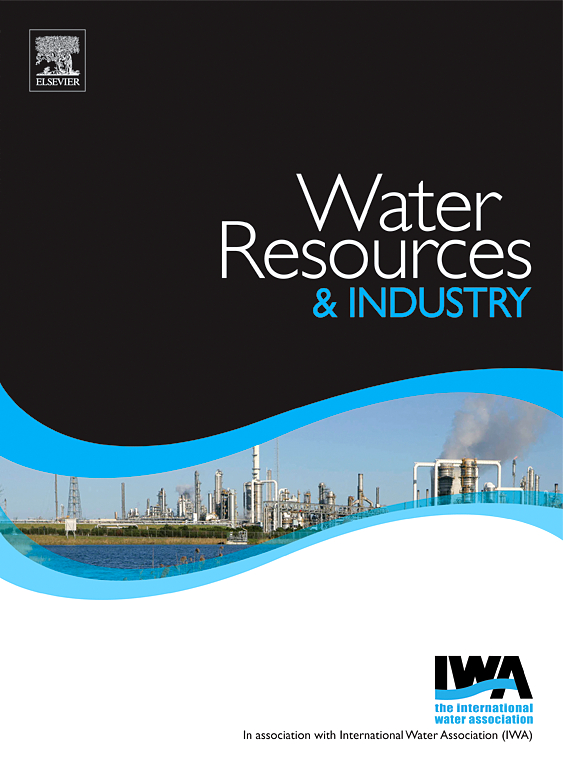Advanced evaluation of performance of machine learning models for soapstock splitting optimisation under uncertainty
IF 4.5
3区 工程技术
Q1 WATER RESOURCES
引用次数: 0
Abstract
This study proposes a computational framework for the prediction and optimisation of soapstock splitting under conditions of limited measurement data and input uncertainty. The objective was to evaluate and select the modeling approaches based on (i) data availability, (ii) model complexity, (iii) predictive accuracy, and (iv) sensitivity to input uncertainty. Machine learning algorithms—Extreme Gradient Boosting (XGBoost) and Support Vector Machines (SVM)—were assessed in comparison with Response Surface Methodology (RSM). XGBoost provided the most accurate predictions for chemical oxygen demand (COD) and organic phosphorus (Porg), while SVM performed best for acid number (AN). K-means clustering identified specific input domains where RSM models could effectively substitute for XGBoost, offering a balance between simplicity and performance. GSA showed that the key influence on Porg (organic phosphorus), COD (chemical oxygen demand) and AN (acid number) was the phosphorus content of the oil, and less important were the operational parameters of the soapstock splitting system. Multi-criteria optimisation under uncertainty using a genetic algorithm (NSGA II) showed a significant influence of phosphorus content uncertainty on the choice of soapstock splitting operating conditions. These findings underscore the importance of accurate phosphorus quantification and support the development of robust, data-efficient computational tools for the monitoring, prediction, and optimisation of complex industrial processes such as soapstock splitting.

不确定条件下皂料拆分优化机器学习模型性能的高级评价
本研究提出了一个在有限测量数据和输入不确定性条件下预测和优化皂料分裂的计算框架。目的是根据(i)数据可用性、(ii)模型复杂性、(iii)预测准确性和(iv)对输入不确定性的敏感性来评估和选择建模方法。机器学习算法——极端梯度增强(XGBoost)和支持向量机(SVM)——与响应面方法(RSM)进行了比较评估。XGBoost对化学需氧量(COD)和有机磷(Porg)的预测最准确,而SVM对酸值(AN)的预测效果最好。K-means聚类确定了RSM模型可以有效替代XGBoost的特定输入域,在简单性和性能之间提供了平衡。GSA结果表明,油中磷的含量是影响Porg(有机磷)、COD(化学需氧量)和AN(酸值)的主要因素,皂料裂解系统的操作参数影响较小。利用遗传算法(NSGA II)进行了不确定条件下的多准则优化,结果表明磷含量的不确定度对皂料裂解操作条件的选择有显著影响。这些发现强调了准确的磷定量的重要性,并支持开发强大的、数据高效的计算工具,用于监测、预测和优化复杂的工业过程,如皂料分裂。
本文章由计算机程序翻译,如有差异,请以英文原文为准。
求助全文
约1分钟内获得全文
求助全文
来源期刊

Water Resources and Industry
Social Sciences-Geography, Planning and Development
CiteScore
8.10
自引率
5.90%
发文量
23
审稿时长
75 days
期刊介绍:
Water Resources and Industry moves research to innovation by focusing on the role industry plays in the exploitation, management and treatment of water resources. Different industries use radically different water resources in their production processes, while they produce, treat and dispose a wide variety of wastewater qualities. Depending on the geographical location of the facilities, the impact on the local resources will vary, pre-empting the applicability of one single approach. The aims and scope of the journal include: -Industrial water footprint assessment - an evaluation of tools and methodologies -What constitutes good corporate governance and policy and how to evaluate water-related risk -What constitutes good stakeholder collaboration and engagement -New technologies enabling companies to better manage water resources -Integration of water and energy and of water treatment and production processes in industry
 求助内容:
求助内容: 应助结果提醒方式:
应助结果提醒方式:


